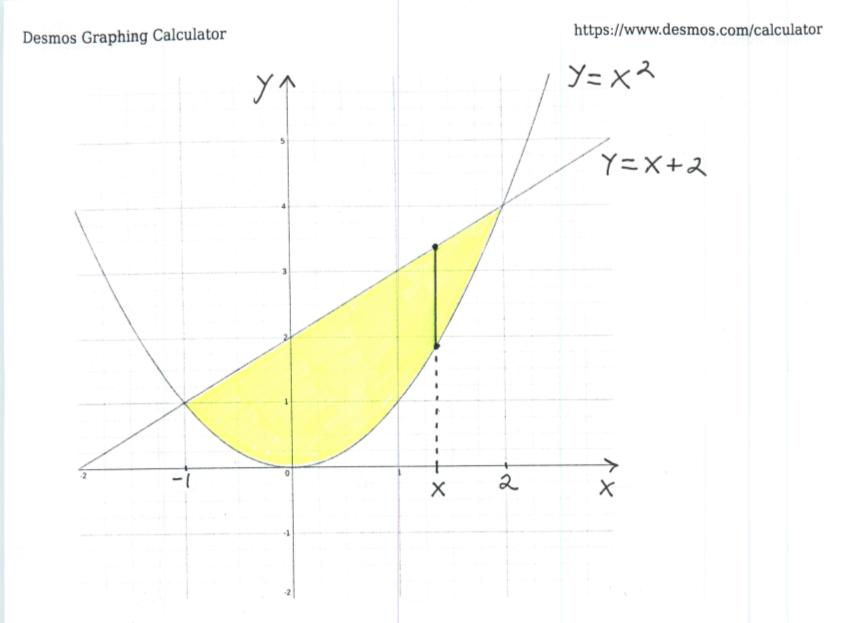SOLUTION 2: Compute the area of the
region enclosed by the graphs of the equations $ y=x^2 $ and $
y=x+2 $ . Begin by finding the points of intersection of the two
graphs. From $ y=x^2 $ and $ y=x+2 $ we get that
\vskp
$$ x^2=x+2 \ \ \longrightarrow $$
$$ x^2-x-2=0 \ \ \longrightarrow $$
$$ (x-2)(x+1)=0 \ \ \ \ \longrightarrow $$
$$ x=2 \ \ or \ \ x=-1 $$
Now see the given graph of the enclosed region.

Using vertical cross-sections to describe this region, we get that
$$ -1 \le x \le 2 \ \ and \ \ x^2 \le y \le x+2 , $$
so that the area of this region is
$$ AREA = \displaystyle{ \int_{-1}^{2} (Top \ - \ Bottom) \ dx } $$
$$ = \displaystyle{ \int_{-1}^{2} ((x+2)-x^2) \ dx } $$
$$ = \displaystyle{ \Big( {x^2 \over 2}+2x-{x^3 \over 3} \Big)
\Big\vert_{-1}^{2} } $$
$$ = \displaystyle{ \Big( {2^2 \over 2}+2(2)-{2^3 \over 3} \Big)
- \Big( {(-1)^2 \over 2}+2(-1)-{(-1)^3 \over 3} \Big) } $$
$$ = \displaystyle{ \Big(2+4-{8 \over 3}\Big) - \Big({1 \over
2}-2+{1 \over 3}\Big) } $$
$$ = \displaystyle{ \Big(6-{8 \over 3}\Big) - \Big({3 \over 6}-{12
\over 6}+{2 \over 6}\Big) } $$
$$ = \displaystyle{ \Big({36 \over 6}-{16 \over 6}\Big) - \Big({-7
\over 6}\Big) } $$
$$ = \displaystyle{ {20 \over 6}+{7 \over 6} } $$
$$ = \displaystyle{ {27 \over 6} } $$
$$ = \displaystyle{ {9 \over 2} } $$
Click HERE to return to the list of problems.

